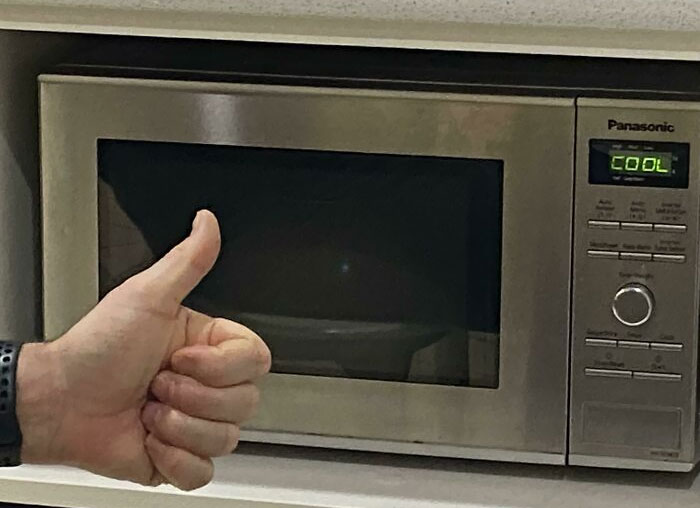I’ve gone 47 years without knowing that.
Same technique as making and integrating a cornstarch slurry to thicken a soup.
If you add hot water to corn starch, you’re gonna have a bad time. And clumps.
(Use cold water to make the paste, then add that to the heated liquid you want to thicken via corn starch, FYI.)
Now the real fun is doing 5 gallons of soup, breaking out the industrial immersion blender and xanthum gum.
Blender > clumps.
In my experience 5 gallons of soup will need about 15 picograms of xanthan gum! That shit is powerful!
How does that improve the slurry method above?
The blender is greater than the clumps?
One would hope.
Usually I mix cold water and starch in a jar and shake the fuck out of it, then pour it into the sauce or soup or whatever
Add starch to cold water to make gravy.
Add starch to hot water to make dumplings.
is there nothing Americans won’t add corn products to?
I was going to say gasoline, but actually no, not really.
With the exception of protein powder, add it on top of the liquid and mix it.
Yeah that’s what I do. Simple easy and no clumps.
I’ve always done protein powder first, then add liquid and doing it the other way around sounds like blasphemy.
Never get any clumps either!
Dry powder on top of a liquid is pure insanity, next you’ll tell me you add milk to a bowl of cereal before the cereal
But from there, there is actually much debate about which order of combining is best. Some say that adding dry into wet leads to clumps of dry ingredients floating in the batter, while others say that actually the opposite, adding wet to dry, leads to, well, clumps.
It would appear that the jury is still out, and everyone despises clumps. But one thing is definitely true: It’s much harder to successfully add dry ingredients into wet ingredients neatly. That order tends to lead to a giant puff of flour wafting toward the ceiling, and settling all over the counters, while a steady, viscous stream of wet ingredients will instead narrowly ribbon its way down into the bowl containing dry ingredients, and nowhere else.
The powder flying every where is something to take into consideration, i use a fork, start slow then fast once powder is fully submerged. In termsof clumps they all eventually soak through and dissolve if you let it sit.
Would that also be true of something like Soylent?
Never used it so not sure, maybe try a couple experiments. At least with protein when you try to make a paste it becomes a thick hard goop that is difficult to stir, and when you diluted it doesn’t go into solution any faster than if it was dry. And the reason I say put it on top of the liquid is because when it’s in the bottom it still goods up, sticks to the cup and doesn’t mix. But if it’s on top it stays suspended allowing it to mix when you stir
Soylent if you have one of those shakers should be good enough as is.
The best method (including Soylent) is adding 2.5-4cm (1"1.5") of water to the shaker bottle, adding the powder, tapping the bottle on the counter a couple times, then topping off with water. Once filled, replace the top, give it a good shake, let it sit for a minute or two, and then give it a final shake to get the last bit off the side.
This method prevents the powder from sticking to the inside edge around the base or to the top and reduces the shaking needed. If you’re really hungry, with Soylent, you can actually use up to 105g (3.5 scoops) of powder in the standard sized shaker bottle and it will still mix properly if you finish adding water after replacing the top to a little below the flip-cap opening.
You can do the protein powder first. Just make sure that when you pour in the water, it stays on top of the protein and doesn’t seep through to the bottom. Then flip the bottle over, shake it (without flipping) until all the powder unsticks from the bottom, then proceed to shake normally.
Alternatively, fill the bottle with about an inch of water, add the powder, then fill the rest of the way with water and shake normally.
The problem with water first is that you can’t stick the scoop into the bottle and protein powder flies off everywhere.
I use a mug,but I see how that an work
Same if you make mac and cheese with powdered cheese. Make a roux, make the sauce, then mix the sauce into the noodles.
Any mac’n’cheese recipe that involves silent consonants is too fancy for my mac’n’cheese…
That’s rough. I mean, rof.
Your Kraft mac and cheese will be much easier to mix the cheese in my way.
Took me too long to figure that one out
When making mac and cheese just cook the pasta in milk, then when it’s ready add in the grated cheddar, mozzarella and cream cheese and stir. Job done.
That’s kind of a different thing than I was talking about.
I used to have problems with clumps. I still do, but I used to as well.
For the most part I now make things in batches. Hot chocolate, tea, whatever. With big batches I can use the mixing bowl and use the immersion blender. Nothing stays clumpy when you have a blade whizzing around at 3000+ rpm.
rip mitch
rip mitch
Jokes on you, I love the clumps of chocolate in milk with cocoa powder.
This is the best way to mix wasabi and soya sauce too
Why are you mixing them
Because it tastes good.
But it tastes so much worse than adding a ball of wasabi to the piece and dipping the soy sauce separately if at all. How can you possibly get enough wasabi to really bring out the flavor of the fish without absolutely drowning your sushi in soy sauce? Not every piece should get the same proportion of soy sauce and wasabi either.
You mix a ton of wasabi into the soy sauce. Artificial non-problem solved!
My wife does that too. I don’t get it.
I’m glad I’m not the only one
I do this with cold milk or creamer when making hot chocolate. Make a nice paste by continuously mixing it while waiting for the water to boil is plenty good enough and makes it much tastier!
Believe it or not, another waiter told me about this, yeeears ago. It’s like some dark art for non-coffee patrons. It was a ritual when I came to see my nephews, too.
We used a small amount of milk instead; especially when the restaurant is cheap about it.
THE PLOT NO LONGER CLUMPENS!
With chocolate milk i have always just added a small amount of boiling water to the powder and swished it round the cup. not with a spoon, just hold the cup at the top and swing it round in small circles and use centrifugal force to mix it (obviously dont swing it too hard or it will leave yo cup and burn your hand) then add the cold milk to the top. Never had clumps.
But I will try this.
Cocoa is definitely gonna clump up this way just making the paste if you don’t have enough liquid to rehydrate the entire amount. Especially if you try to do it with cold liquid.
The real trick is to add it slowly while stirring. Like you’re adding the milk when making custard or the sugar for merangue.
I’ve just stirred the drink, no clumps
I’ve just stirred the drink, no clumps
That’s literally what “instantized” means, though. 😅













